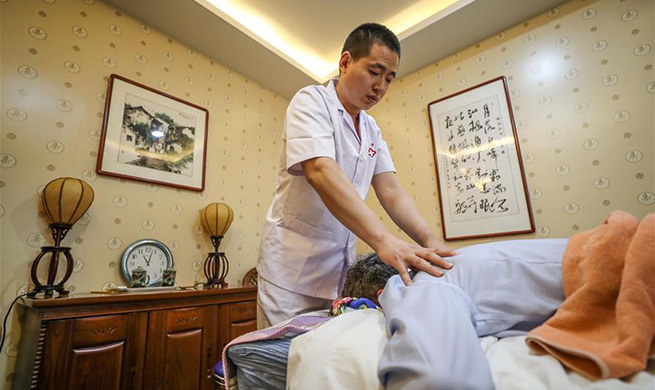LONDON, July 3 (Xinhua) -- Clinical validation trials in China has proved that the Electrical Impedance Mammography (EIM) technology can be a new patient friendly cancer screening technology, a UK-China joint research team announced here Wednesday.
On the 20th International Conference on Biomedical Applications of Electrical Impedance Tomography (EIT), Professor Wang Wei, leader of the UK-China EIM tech research team, told the audience that more than 30 clinical validation trials have confirmed that the EIT-based EIM technology can accurately detect and distinguish between benign and malignant breast masses.
Started 25 years ago and involving nearly 100 researchers at five different universities in both Britain and China, Wang Wei's EIM tech research has made a breakthrough in the early clinical diagnosis of breast cancer based on detection of cellular information formed from 3-D Parametric images, which are low cost and low-risk.
"It is non-invasive, painless, and X-ray-free, and can accurately identify and distinguish between benign and malignant breast diseases, including ductal carcinoma, fibroadenomas and breast hyperplasia," Wang introduced.
"And the current progress is very encouraging, with no single missing case during the clinical validation trials," he said.
EIM technology was invented by Wang Wei in the UK and had its clinical trials at the Oxford John Radcliffe Hospital in 2009-12. In October 2014, the team began to optimize the clinical prototype and build a commercial prototype manufactured with the support of the Ningbo municipal government of Zhejiang Province, China.
Pre-industrial clinical trials took place at the Ninghai Maternal and Child Health Hospital in Ningbo at the end of 2018.
From March 2019, a total of 32 clinical trial volunteers were enrolled in the study and 28 successful clinical trials were obtained. The results at this stage have proved EIM technology successfully identify structural and cellular variability, and overcome some technical blind spots of B-ultrasound, Mammography target and CT which are more commonly used to detect cancers nowadays.
Professor David Barber from Sheffield University, who invented in the early 1980s the world's first working medical EIT system, told Xinhua that in terms of the difficulty of EIT, the EIM tech research "is making great progress".
"They are doing very well. They already have clear sensible images of the breast masses, and a clear evidence that we can see abnormal tissues which was a quite challenging problem," the world-renowned scientist remarked.
Wang told Xinhua that the joint EIM team will continue to expand and accelerate clinical trials in China and Britain, to technically further improve image accuracy by establishing an EIM-based diagnostic database.
"By its advanced capability for identification very early stage of the malignancies, we are working to make the technology industrialized in China as soon as possible, to reinforce this new technology for protection of millions of women and the families from the breast carcinomas worldwide," he added.













